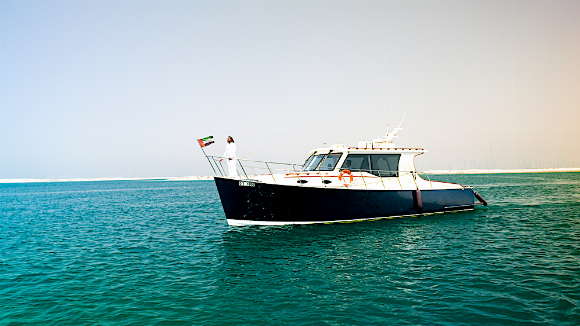 Germany 2022, 58/83 min, HD
Germany 2022, 58/83 min, HDA Neue Celluloid Fabrik Production
by Rudolph Herzog
300 Trillion – The Debt Trap
The worldwide mountain of debt is more than 300 % of the world’s annual economic output. Since the pandemic, debt expansion is out of control. Will the system collapse under its weight?The film explores the significance of our debt situation, looking at true stories behind the situation, from a debtors' prison in Mississippi to the world’s most notoriously indebted country.
When do debts become unsustainable? In Dubai the remnants of a past debt boom can be seen on the wayside: empty shells of grand buldings that were the ruin of many of investors. Yet the most outlandish project was "The World", a gigantic map of the world off the coast of the emirate, composed entirely of artificial islands. Josef Kleindienst, one of the only developers to have built on the islands, takes us on a tour of his luxury properties, designed as resorts for the super rich.
The film looks at entire countries on a sugar high of cheap credit, as well as impoverished states on a precipice of debt. It also tracks the impact of debts on vulnerable individuals. In Mississippi, Annita Husbands lived in a debtors' prison and toiled in a fast food restaurant to pay off a $13,000 debt. K.K. Kent, a businesswoman, is one of the employers who recruits farmhands from the prison service, and has her own views on the moral pitfalls of debt.
In Argentina, we met individuals who are suffering from the bankruptcy of their country. Argentina has had debt crises multiple times, including three brushes with bancruptcy in the last 20 years. The consequences are a general impoverishment of the population, forced to resort to bartering because the peso has devalued catastrophically, and to go and eat in soup kitchens.
These examples are punctuated by testimonies of renowned experts, including Richard Vague, a former banker and director of a credit card company, who explains why countries need debt to survive, Sandra Navidi, an international consultant, Christoph Trebesch, a financial historian and researcher at the University of Kiel, and Frederick Wherry of Princeton University who has researched the impact of racism on credit.
The film is a voyage of discovery through the continents. The absurdities found along the way are approached with a gentle dose of humor, a tongue-in-cheek sense of wonder at the follies of humankind. With a healthy mixture of playful observation and documentary precision, we address the big questions: How do other cultures deal with debt? What consequences can indebtedness have, for debtors and for creditors? And, especially, what solutions are there to manage the problem?
